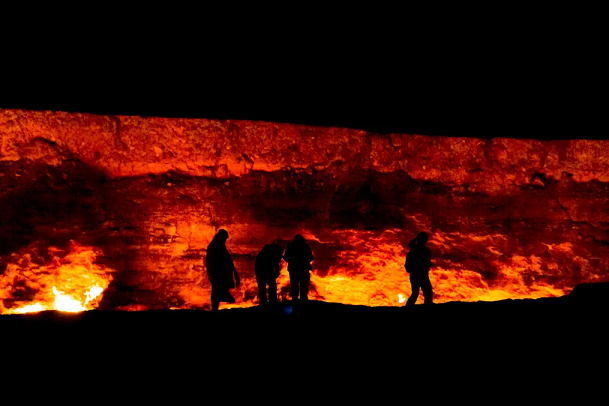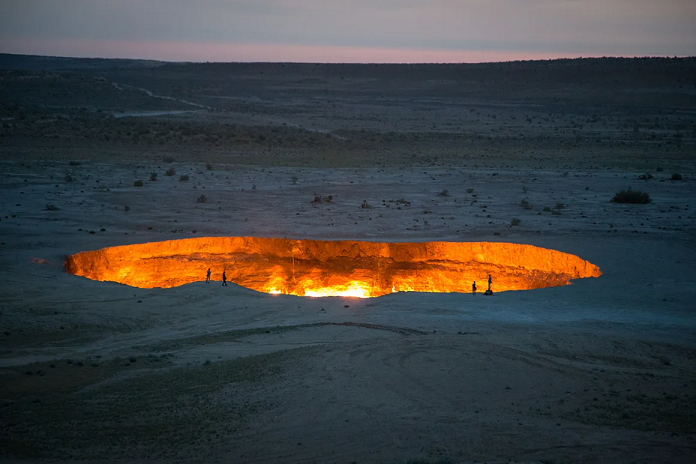The Darvaza Gas Crater, commonly known as the “Gates of Hell,” is a vast, fiery crater located in Turkmenistan’s Karakum Desert. Created over 50 years ago by a Soviet drilling accident, the crater emits methane-fueled flames from its floor and walls, making it one of the country’s top tourist attractions. The crater measures roughly 230 feet wide and 100 feet deep, with vertical walls that drop into a rocky field below. It’s especially dramatic at night, as the fiery glow lights up the surrounding desert landscape, creating an eerie yet mesmerizing scene.
Despite its appeal, the Darvaza Gas Crater’s future remains uncertain. The Turkmenistan government has long considered extinguishing the flames and transforming the site into a natural gas production area, citing environmental concerns, health risks, and the loss of valuable natural resources. Though no official plans have been executed, locals worry that if the flames are put out, tourism in the area will suffer, affecting many livelihoods dependent on visitors drawn to this unique spectacle. The crater has been burning for decades, but repeat visitors say the flames are less intense these days.
The crater has been burning for decades, but repeat visitors say the flames are less intense these days.
The crater’s origins are shrouded in mystery, with conflicting stories about when and how it formed. Some believe it was created in 1971 and set on fire shortly afterward, while others claim it dates back to the 1960s, only catching fire in the 1980s. Despite the uncertainty, the Darvaza Gas Crater continues to amaze those who make the challenging journey across the desert, standing as a striking testament to the unexpected and enduring impact of industrial accidents on natural landscapes.






_主圖.jpg)
